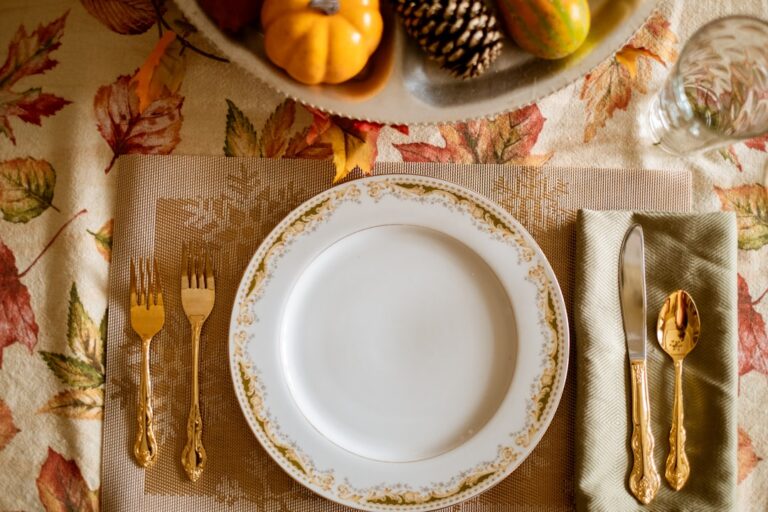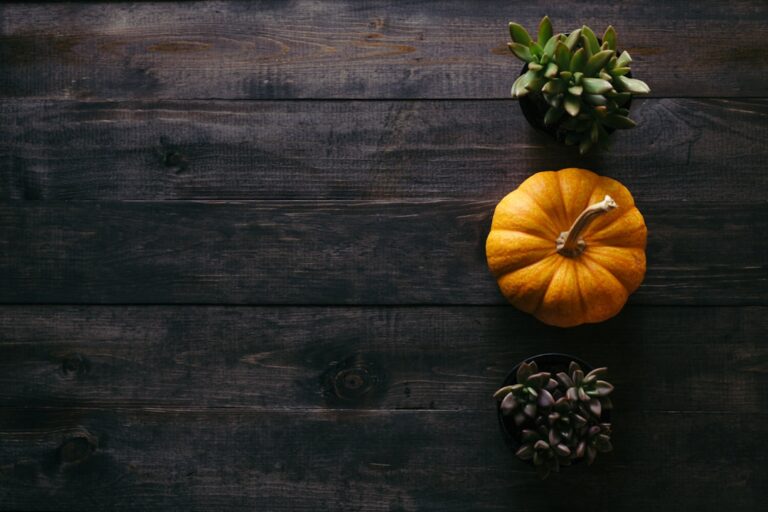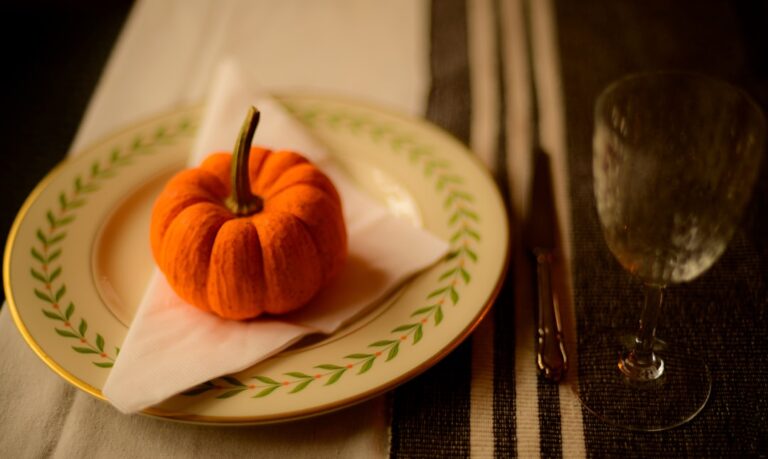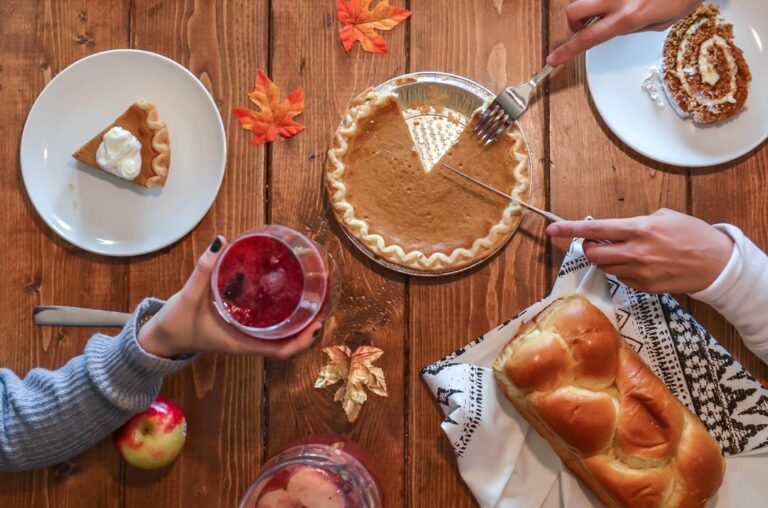A Culinary Journey Through Time: Thanksgiving Trivia In the United States, Thanksgiving is a beloved holiday that is marked by feasting, family get-togethers, and thankfulness. Even though the celebration has changed over time, its culinary customs continue to be a major draw. The lengthy history of Thanksgiving cooking, unusual ingredients and recipes, the customs of well-known chefs, food pairings, cooking methods, and much more are all covered in this article. Need Weekly Trivia Questions? https://cheaptrivia.com/products/weekly-trivia-subscription-service
Key Takeaways
- Thanksgiving cuisine has evolved over time, with traditional dishes like turkey, stuffing, and pumpkin pie becoming staples of the holiday meal.
- Unique Thanksgiving ingredients and dishes include cranberries, sweet potatoes, and pecans, which are often used in creative and delicious ways.
- Famous chefs often put their own spin on Thanksgiving traditions, incorporating unique flavors and cooking techniques into their holiday meals.
- When it comes to Thanksgiving food and wine pairings, options like Pinot Noir, Chardonnay, and Riesling are popular choices to complement the rich and savory flavors of the meal.
- Thanksgiving cooking techniques and tips can help home cooks prepare a delicious and stress-free holiday meal, from brining the turkey to making the perfect gravy.
Let’s explore the intriguing realm of Thanksgiving cuisine, which has its roots in the early 17th century, when English settlers arrived in North America. The Pilgrims and the Wampanoag tribe celebrated a three-day harvest festival in 1621, which included the first Thanksgiving feast. The local cuisine at this event included wildfowl, venison, corn, and squash, among other dishes. Both the settlers’ and Indigenous peoples’ agricultural methods and the local environment were reflected in the menu.
Thanksgiving cuisine started to change over time. Because it was so plentiful and large, turkey was the main course by the 19th century. Turkey became the main course thanks in large part to the writings of well-known author & editor Sarah Josepha Hale. As a result of her efforts, President Abraham Lincoln officially recognized Thanksgiving as a national holiday in 1863.
The way Thanksgiving was observed changed as a result, and turkey’s position at the table was cemented. There are many unusual foods and dishes that add to the Thanksgiving culinary tapestry, even though turkey is frequently regarded as the centerpiece of the meal. One common side dish that differs by area is stuffing or dressing.
In the South, cornbread stuffing with pecans and cranberries is more typical, but in the Northeast, you might find bread-based stuffing seasoned with herbs and sausage. Every variation narrates the use of regional ingredients and cultural influences. A different dish that has become more and more popular is sweet potato casserole with pecans or marshmallows on top. Rich toppings & the inherent sweetness of sweet potatoes are combined in this dish to create a delightful flavor contrast.
A classic accompaniment that balances the savory components of the meal with a tart touch is cranberry sauce. Whether prepared from scratch or from a can, this colorful sauce has come to represent Thanksgiving meals. Celebrity chefs frequently incorporate their culinary philosophies into their Thanksgiving meals, giving them their own distinctive spin on the holiday customs. In her Thanksgiving preparations, for instance, celebrity chef Ina Garten places a strong emphasis on quality ingredients and simplicity.
Classic recipes with a twist, like herb-roasted turkey and creamy mashed potatoes made with premium butter & cream, are frequently a part of her menu. However, chef Gordon Ramsay contributes his talent for strong flavors. He frequently posts recipes that combine classic American dishes with traditional British influences. He has a knack for making comfort food more elegant, and his version of stuffing may contain bacon and chestnuts.
These chefs serve as a reminder that Thanksgiving can be a time for culinary creativity in addition to inspiring home cooks. You can greatly improve your Thanksgiving meal by matching wine with your meal. Versatile wine selections are necessary due to the wide range of flavors found in a traditional Thanksgiving meal. A well-liked option is Pinot Noir, which goes well with turkey because of its fruity notes and light body. This red wine can enhance the flavors of roasted vegetables while balancing the richness of stuffing and gravy.
Chardonnay is a great choice for people who like white wine. Green bean casserole and other creamy dishes like mashed potatoes go nicely with its buttery texture. Also, the acidity of sparkling wines like Prosecco or Champagne can cut through richer foods while adding a festive touch to your celebration. You can make your Thanksgiving dinner extraordinary by being aware of these pairings.
Thanksgiving cooking can seem overwhelming, but with the correct methods & advice, you can easily prepare a feast that will be remembered. A crucial method is to brine your turkey before roasting it. Brining produces a juicy and tender bird by adding flavor and moisture to the meat. For extra depth, try experimenting with herbs & spices or using a straightforward brine of saltwater.
Carefully organizing your cooking schedule is another crucial piece of advice. When there are several dishes to prepare, timing is essential to guaranteeing that everything is served hot and fresh. To free up time on the day of the feast to concentrate on cooking the turkey, think about making side dishes like pies or casseroles ahead of time. Your cooking process can also be streamlined by using kitchen appliances like instant pots and slow cookers. Thanksgiving’s culinary customs have their origins in a number of cultural traditions.
The agricultural heritage of early settlers and Indigenous peoples, who depended on seasonal crops for sustenance, is reflected in many dishes. For example, corn has long been a mainstay of Native American diets & was used in early Thanksgiving dishes in a variety of ways, including succotash and cornbread. Many families also have distinctive recipes that have been handed down through the generations & are a reflection of their cultural heritage. For instance, Mexican-American families might complement their celebration with tamales or mole sauce, while Italian-American families might serve lasagna or roasted vegetables with traditional turkey dishes.
The holiday season is enhanced by these varied customs, which also serve to emphasize how diverse American culture is. Thanksgiving is not just about mouthwatering food; it’s also about interesting facts that can be discussed at the dinner table. Around 46 million turkeys are eaten annually during Thanksgiving, which is a startling statistic that shows how essential turkey has become to the concept of the holiday. An additional fascinating fact is that approximately 50 million pumpkin pies are consumed by Americans during this joyous occasion! Pumpkin pie has come to represent Thanksgiving dessert tables nationwide.
Also, surveys show that almost 90% of Americans eat turkey on this day, making it one of the most popular holiday fare. Thanksgiving is mostly observed in the United States and Canada, but harvest festivals of a similar nature are observed all over the world, each with its own distinctive tradition of food. For example, the harvest festival, Erntedankfest, is celebrated in Germany with feasts that include seasonal foods like apples & nuts. Traditional fare might include dumplings and roasted duck or goose. On November 23, Japan celebrates Kinrō Kansha no Hi, or Labor Thanksgiving Day, with family get-togethers focused on rice dishes and in-season vegetables.
We are reminded that appreciation for food & community transcends cultural boundaries by these international viewpoints on harvest celebrations. Thanksgiving cuisine has deeper cultural significance than just providing nourishment. It symbolizes appreciation for the harvest & a chance to consider our blessings.
Eating meals together with loved ones improves communication and fortifies ties within the family. Incorporating traditional recipes that tell their stories is another way that many families use this occasion to honor their heritage. This practice teaches the next generation about their heritage while also preserving cultural identity. Think about the ways that each dish adds to the story of your family as you assemble around the table this Thanksgiving. Thanksgiving menus have changed significantly over the years due to new ingredients and shifting culinary trends. Meals in the past were frequently simpler and centered on foods that were either locally sourced or preserved from earlier harvests.
Nonetheless, contemporary menus feature a fusion of classic dishes with creative recipes inspired by other cuisines. Thanksgiving dinners today might have a mix of traditional stuffing & cranberry sauce with fusion fare like Mediterranean-style roasted vegetables or Thai-inspired turkey curry. This development demonstrates how food can change while maintaining tradition, enabling families to create special annual experiences. New culinary trends are continuing to influence Thanksgiving celebrations as the twenty-first century progresses. Due to the growing popularity of plant-based diets, many families are looking into vegetarian or vegan substitutes for traditional foods.
For example, lentil loaf or stuffed acorn squash can be used as filling main courses to accommodate a range of dietary requirements. Also, during this holiday season, sustainability has grown in importance to many home cooks. To reduce their environmental effect and help local farmers, more people are choosing organic or locally sourced ingredients.
In addition to reflecting shifting consumer preferences, these trends also inspire innovation in Thanksgiving meal preparation. Let’s sum up by saying that Thanksgiving is a celebration rich in culture, history, and customs that goes far beyond a simple meal. An unforgettable feast that celebrates the past and present while uniting loved ones in gratitude can be prepared by comprehending its culinary origins & embracing cutting-edge trends. Whether you’re cooking traditional fare or trying out new flavors, your Thanksgiving table will surely tell your own story this year.
If you’re looking for more Thanksgiving trivia ideas to impress your guests at foodie events, you may want to check out this article on Thanksgiving Trivia 2024: Plan Your Bar’s Future Holiday Events. This article offers fresh and engaging questions to keep your customers entertained and delighted. Additionally, if you’re interested in learning more about Canadian Thanksgiving, you can also read about 10 Things About Canadian Thanksgiving to add a unique twist to your foodie event.
GRAB YOUR FREE HOLIDAY TRIVIA PACKS
FAQs
What are some gourmet Thanksgiving trivia ideas for foodie events?
Some gourmet Thanksgiving trivia ideas for foodie events include questions about the history of Thanksgiving, traditional Thanksgiving foods, famous chefs and their Thanksgiving recipes, and fun facts about Thanksgiving ingredients.
What are some examples of Thanksgiving trivia questions for foodie events?
Some examples of Thanksgiving trivia questions for foodie events include: “What is the traditional meat served at Thanksgiving dinner?”, “Who is known for creating the green bean casserole recipe?”, “What is the origin of the Thanksgiving turkey pardoning tradition?”, and “What are some popular Thanksgiving desserts?”
How can I incorporate gourmet Thanksgiving trivia into a foodie event?
You can incorporate gourmet Thanksgiving trivia into a foodie event by hosting a trivia game, creating a trivia quiz for guests to complete, or incorporating trivia questions into a cooking demonstration or tasting event.
Where can I find more gourmet Thanksgiving trivia ideas for foodie events?
You can find more gourmet Thanksgiving trivia ideas for foodie events by researching Thanksgiving history, traditional Thanksgiving recipes, and famous chefs known for their Thanksgiving creations. You can also find inspiration from food and cooking websites, cookbooks, and culinary magazines.






